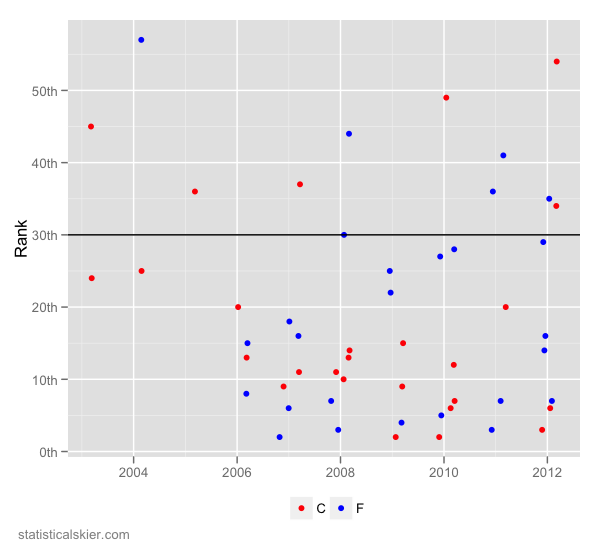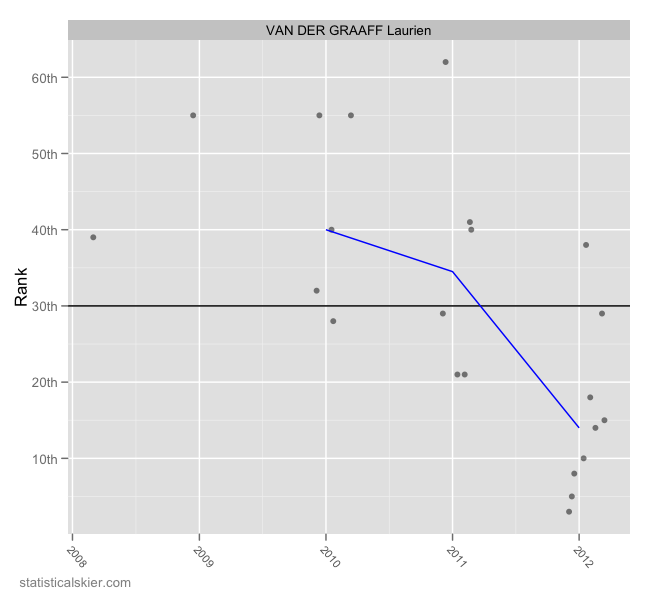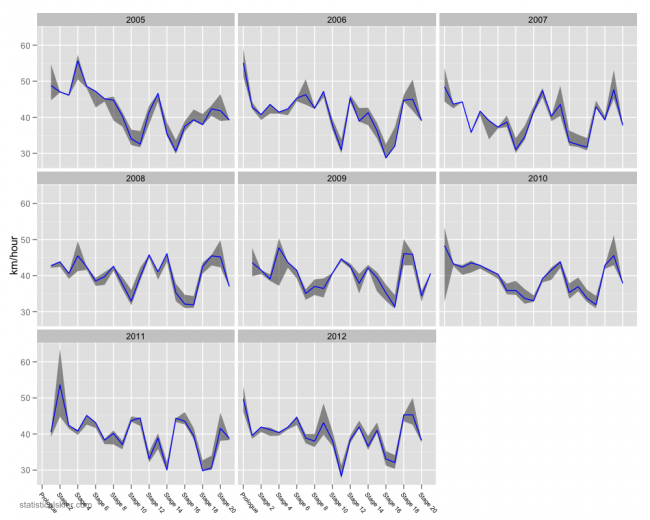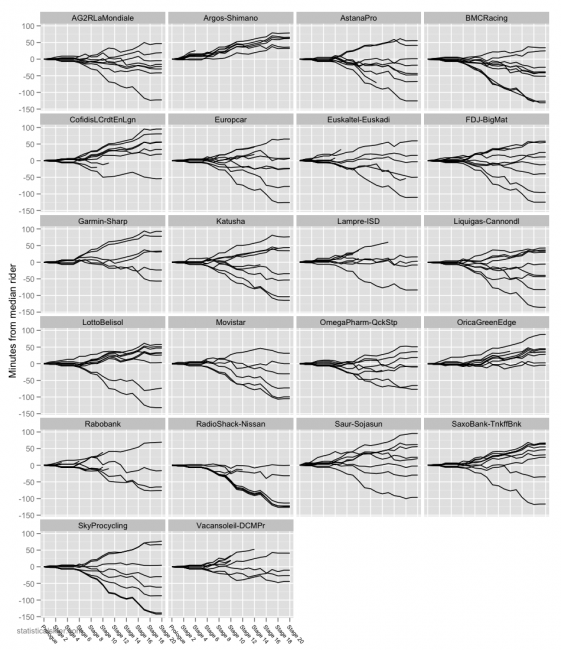Kikkan Randall, the reigning women’s World Cup sprint champion, obviously had a pretty darn good season last year. How does it stack up against some of the best sprint seasons put together since 2005-2006?
The first thing that stood out to me is that if you rank the best women’s sprint seasons, Randall participated in more races that is typical. If you rank the seasons by the proportion times the athlete wins, reaches the podium, reaches the finals, etc. It turns out that of the 50 best women’s seasons, the average number of sprint races done is about 9. Kikkan raced in 13 World Cup sprints last season. If you can hack it that’s a good strategy, of course, since the World Cup title is based on total points accumulated.
But it also explains why by some measures, Randall’s 2012 season wasn’t as good as her 2011 season. (Which is kind of crazy, I know, but bear with me…)
She won a slightly smaller proportion of the sprint races she entered (0.154 vs 0.2) and she reached the podium in a slightly smaller proportion as well (0.385 vs. 0.4). So doing more races hurt her in this particular measure by “increasing the denominator”, but on the other hand, she reached the semifinals in all 13 races she entered, which helps to rack of the points.
In fact, only three other women with at least 8 sprint races in a season have managed to reach the semifinals each time: Virpi Kuitunen (2006-2007), Patre Majdic (2008-2009) and of course Marit Bjoergen (2009-2010, 2010-2011). Interestingly, Randall’s season was noticeably less dominant than the ones I just listed; they typically involved double or even triple the proportion of wins or podiums. That sort of reinforces to me that the key element in Randall’s ability to win the World Cup sprint title was her ability to do more races and do well enough in each one.
Interestingly, this pattern holds even when you look only at the freestyle races. Once again, her 2010-2011 campaign was very slightly better, when you measure the number of results as a proportion of freestyle sprints done. She did 7 freestyle sprints last year, and 6 the year before, so the difference in proportions here is really only the result of one race. For my money, the best single season freestyle sprinting campaign for women would be a toss-up between Petra Majdic and Arianna Follis, both in 2008-2009 ironically. They both did 8 freestyle sprints and the two of them won nearly all of them. Both were always in the semis, Follis reached the finals in all 8 while Majdic had more overall wins.
Tagged kikkan randall, Sprint, World Cup




